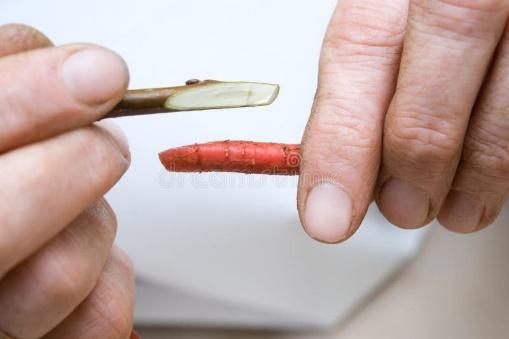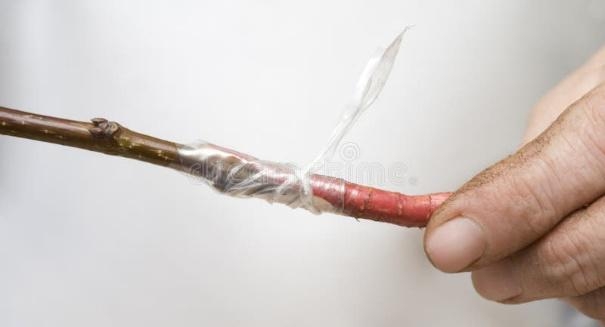Reprint from 2017 Article by
Budding and Grafting: Methods of plant propagation used to grow more than one variety, and in some cases, more than one species, of fruit on a single tree.
Scion: A branch, shoot, or bud removed from one plant and grafted onto another (the stock or rootstock). Also, the aboveground portion of a tree that is asexually produced from a single parent by budding or grafting.
Rootstock: The plant to which the scion is attached. A union forms as the result of the tissue connection that is formed between the rootstock and the scion by the cambium, a thin layer of actively dividing cells located between the wood and the bark of a tree.
Cambium (Vascular Cambium): An actively dividing layer of cells found between a plant's bark and its wood that generates new sapwood (xylem) to the inside and new bark (phloem) to the outside. The cambium causes stems and roots to grow in diameter and it forms a tree's annual rings. In grafting, at least a portion of the scion's vascular cambium must match up with that of the stock.
Phloem: Inner bark tissue that conducts carbohydrates, hormones, and other organic compounds from the site of production to tissues and organs throughout the tree.
Xylem: The complex vascular tissue located at the inner edge of the vascular cambium through which most of the water and nutrients in a tree are conducted in an upward direction.
Source: The Home Orchard – Growing Your Own Deciduous Fruit and Nut Trees. Chuck A. Ingels, Pamela M. Geisel, and Maxwell V. Norton, Technical Editors. 2007

